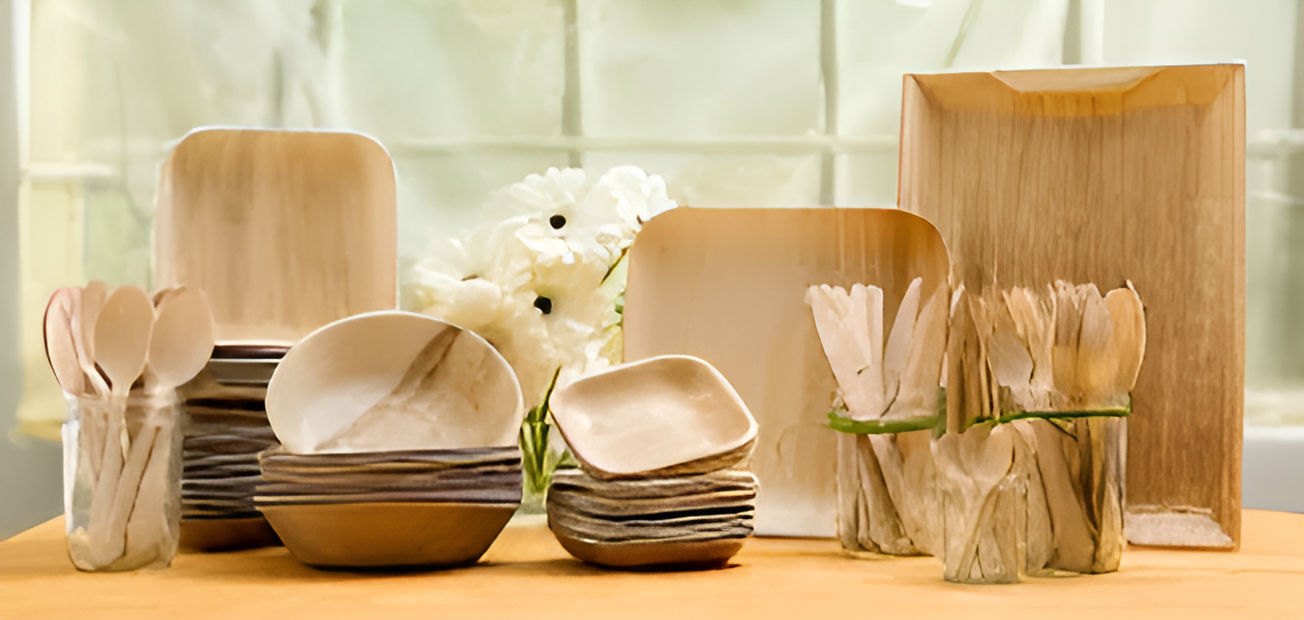In a world where sustainability is increasingly prioritized, the environmental impact of our choices plays a significant role in shaping the future. One of the most debated topics today revolves around traditional tableware versus biodegradable tableware. With Stuti Exim leading the charge in biodegradable innovation, it’s time to explore the differences between these two types of tableware and understand their environmental impact.
The Hidden Costs of Traditional Tableware
Traditional tableware, which includes items made from plastics, styrofoam, and other non-biodegradable materials, has long been a staple in various industries, particularly in the food and event sectors. However, the convenience of these products comes with substantial environmental costs.
Plastic and Styrofoam:
- Plastics, commonly used for disposable tableware, are notorious for their long degradation period—ranging from 450 years to indefinitely.
- Styrofoam, another popular material, is equally damaging. It does not degrade naturally and often breaks down into microplastics that pollute waterways, harm wildlife, and ultimately enter the food chain.
- Traditional tableware is made from non-renewable resources such as petroleum, which further strains the environment by contributing to CO2 emissions during production and decomposition.
The Impact:
- Traditional tableware contributes to the growing landfill crisis. An estimated 269,000 tons of plastic waste is floating in our oceans, damaging marine ecosystems.
- The environmental footprint of producing and disposing of these materials includes high energy consumption, toxic chemical release, and soil and water contamination.
Biodegradable Tableware: The Eco-Friendly Solution
On the other hand, biodegradable tableware is made from natural materials like sugarcane bagasse, bamboo, cornstarch, and palm leaves. These products offer a sustainable alternative with a significantly lower environmental impact.
Compostable and Biodegradable Materials:
- Unlike plastic or styrofoam, biodegradable tableware decomposes naturally in a short period, often within a few months, depending on the environment.
- Materials like sugarcane pulp, which is utilized in Stuti Exim’s products, are renewable, easily compostable, and produced from agricultural waste, reducing the need for non-renewable resources.
The Benefits:
- Biodegradable tableware breaks down into organic matter that enriches the soil, unlike plastic, which leaves behind harmful residues.
- The production process of biodegradable tableware typically consumes less energy and generates lower carbon emissions, supporting a circular economy.
- By switching to biodegradable products, consumers can reduce their carbon footprint, cut down on landfill waste, and protect marine ecosystems.

Sustainability Comparison: Traditional vs. Biodegradable Tableware
The sustainability comparison between traditional and biodegradable tableware is stark. Traditional tableware is derived from non-renewable resources and remains in the environment for hundreds of years, contributing to pollution. In contrast, biodegradable tableware is made from renewable, natural sources and breaks down quickly without harming the environment. Its production process also consumes significantly less energy, reducing the overall environmental footprint.
Why Choose Biodegradable Tableware?
As individuals and businesses become more conscious of their environmental footprint, opting for biodegradable tableware is an easy yet effective way to contribute to sustainability. At Stuti Exim, we are committed to offering affordable, high-quality biodegradable products that not only serve practical needs but also help combat the plastic pollution crisis.
By choosing biodegradable options, consumers reduce their impact on landfills, lower greenhouse gas emissions, and help in restoring ecosystems. The more we shift toward eco-friendly solutions, the closer we get to a future where waste is minimized, and the planet is preserved for generations to come.

Conclusion: The Clear Winner
The environmental benefits of biodegradable tableware far outweigh those of traditional options. With Stuti Exim's sustainable products, you can make a positive impact while enjoying durable, high-quality tableware for every occasion.
Embracing biodegradable tableware isn’t just a trend; it’s a necessity for a sustainable future. Make the switch today with Stuti Exim, and contribute to a healthier planet.